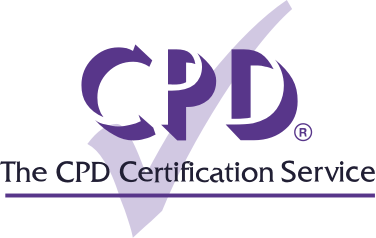The field of UX/UI has become increasingly important for organisations across industry sectors. UX/UI professionals specialise in product design, digital user experience and interfacing. With the rise of digital platforms and technologies, the value of these skills has continued to grow rapidly.
This article discusses the fundamentals of UX and UI, outlining the Continuing Professional Development (CPD) opportunities available for those aiming to enhance their knowledge in these disciplines. We'll also highlight the benefits of UX/UI-focused CPD and where to find relevant courses and learning.
What is UX/UI?
UX stands for User Experience and UI stands for User Interface. They are design concepts and UX/UI professionals are tasked with designing the experience and interface of an organisation’s platform, product or service with the aim of enhancing the engagement and period of interaction with the user. This will encompass an array of skills and factors ranging from initial product development to implementing data analysis outcomes. UX/UI is sometimes referred to as a human-first way of design – ensuring the end user has a meaningful interaction with an organisation’s service and products.
UX/UI is often exclusively associated with the digital realm but the principles can be applied to both digital and physical products. If a product doesn’t function as it should, or it is difficult to use, a user is more likely to consider a competitor’s product. This is why strong UX/UI application is vital in today’s competitive market and knowledge of these specialities is sought after across many industries.
Differences between UX and UI
Although the terms UX and UI are sometimes used interchangeably, they refer to fundamentally separate aspects of the design process. UX professionals work closely with user touchpoints and processes from initial visitation to conversion – such as from a retail website homepage to checkout page. They ensure that products provide users with positive interactions and that the interactions are relevant and logical, making it easy for a user to navigate the product, app or website through all stages.
UI professionals focus on the visual aesthetic and psychological aspects of an organisation’s platform, product or service. UI Design ensures typography and colours are suitable, easy to read and aesthetically pleasing. Designers finalise the look of the product to boost user engagement and ensure all elements are consistent and match organisation logos, established colour schemes, and branding guidelines. A simple example would be ensuring a supermarket website maintains the same branding and aesthetic as that established in-store.
Whilst there are distinct differences between UX and UI, professionals in these fields need to work together closely to complete the overall design process effectively. If you are interested in learning more about UX, you can find out more information in our previous article.
Advantages of UX/UI for Organisations
There are numerous potential benefits for an organisation ensuring employees are skilled and trained in the fields of UX and UI. Some of these potential benefits include higher conversion rates, higher user engagement rates, cost-effective marketing practices leading to possible increased market share and profitability. UX/UI skilled professionals have also become valuable within organsiations that focus heavily on digital marketing and online products and services.
As a broad and developing field, professionals may want to participate in a variety of CPD topics to inform their UX/UI learning. The CPD Certification Service hosts a range of specialised CPD accredited UX/UI courses, and individuals are also likely to benefit from wider CPD learning in key areas such as Web design, Product design, Data analysis, Digital accessibility and Graphic design.














